Gravestones unearthed: get reacquainted with two of Worcester's oldest residents
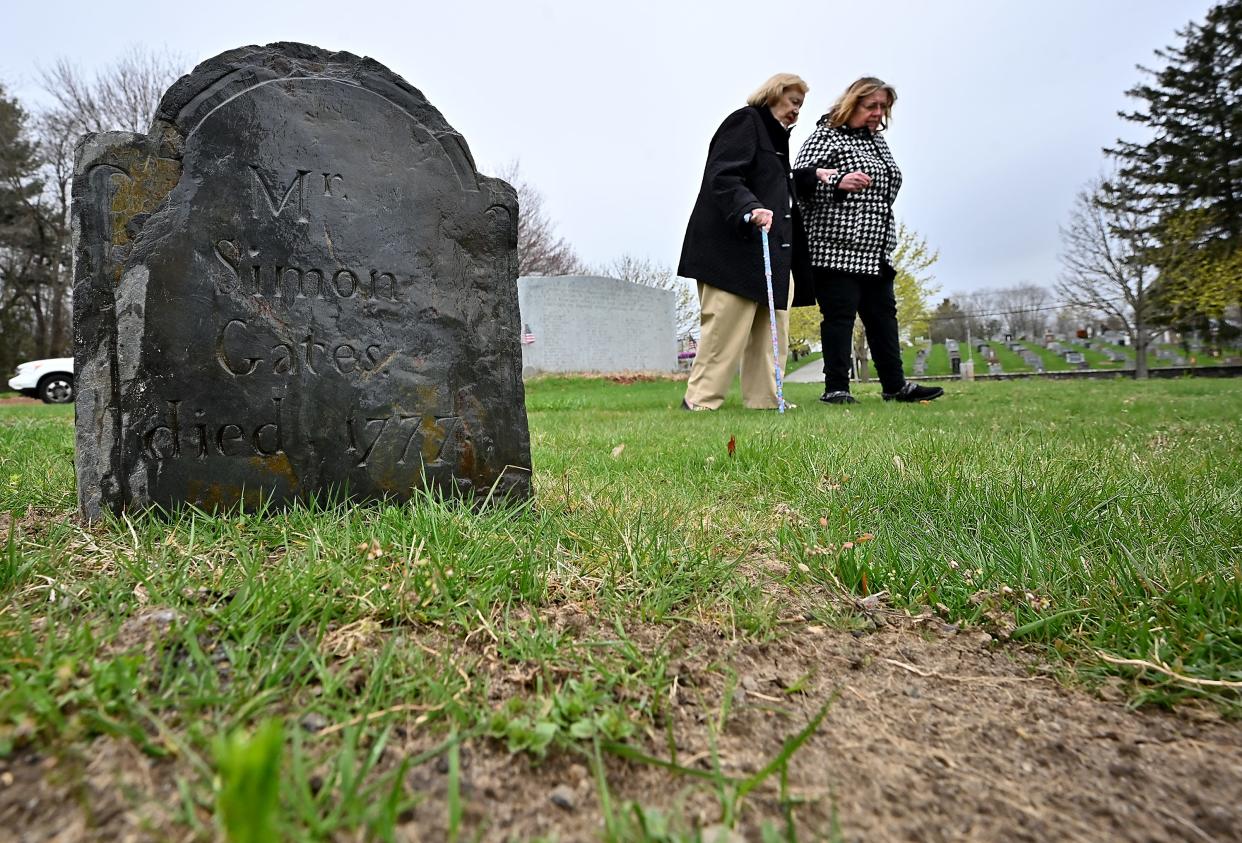
WORCESTER — A cemetery is normally not the place to get energized, but don’t tell that to Janet Parent.
Standing a few feet away from the site of two recently unearthed gravestones at Hope Cemetery, Parent said, “It makes me tingle.”
Parent is the President of the Friends of Hope Cemetery, has lived her entire life in Worcester — 71 years — and she’s excited about the Friends effort to not only restore the gravestones but also bring them above ground for everyone to see.
"It resurrects a fabulous part of Worcester's history,” said Ann “Cookie” Nelson, a vice president at the Friends who joined Parent on a recent rainy morning to view the two gravestones.
Both headstones date back to Revolutionary times, nearly 250 years ago. One marks the life of Simon Gates, who died in 1777, one year after the signing of the Declaration of Independence. The other is inscribed with the name of Mrs. Sarah Trowbridge, who died at 31 on July 15, 1787.
Dozens more gravestones could be unearthed at Hope, but we’re getting ahead of ourselves.
Arduous path
To fully understand the significance of these two gravestones, it's necessary to trace their arduous — some might say tortuous — path to their present destination. Both were once set above ground for everyone to see, then buried, then returned above ground and buried again.
Their story starts in the 1700s on the Worcester Common, which was considerably larger versus today's layout. Worcester’s first church and meetinghouse stood on the spot where City Hall now faces Main Street, and behind those structures was the Common, serving as the city's second active burying ground from 1730 to 1790.
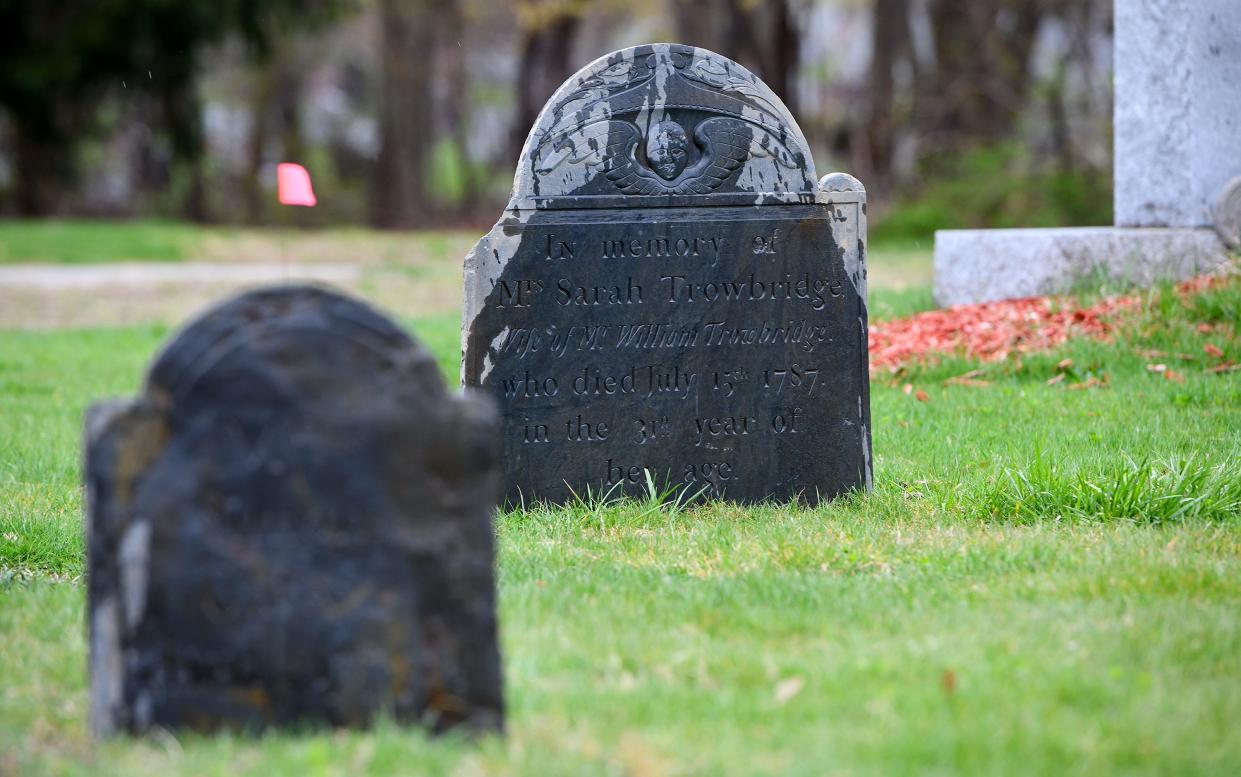
Gates and Trowbrige were buried there, along with many Worcester residents, and their headstones stood above ground.
Times were changing
Worcester was becoming more industrialized by the 1850s, and residents wanted spaces for recreation. A popular spot for good times was the Common, where kids frolicked and gatherings, like cattle fairs, were held.
The excessive foot and animal traffic meant a “decaying” Common, including the gravestones that fell into disrepair, said William Wallace, executive director at the Worcester Historical Museum. As a result, the City Council ordered the gravestones buried underground in the mid-19th century, and the cemetery disappeared from public view.
Jump ahead 100 years to the mid-20th century, when the area around the Common was undergoing a significant transformation from the Worcester Center development project. What to do about the Common’s below-ground burials was a concern, especially since the state wouldn’t release funds to help pay for the project until that issue was addressed, according to Wallace.
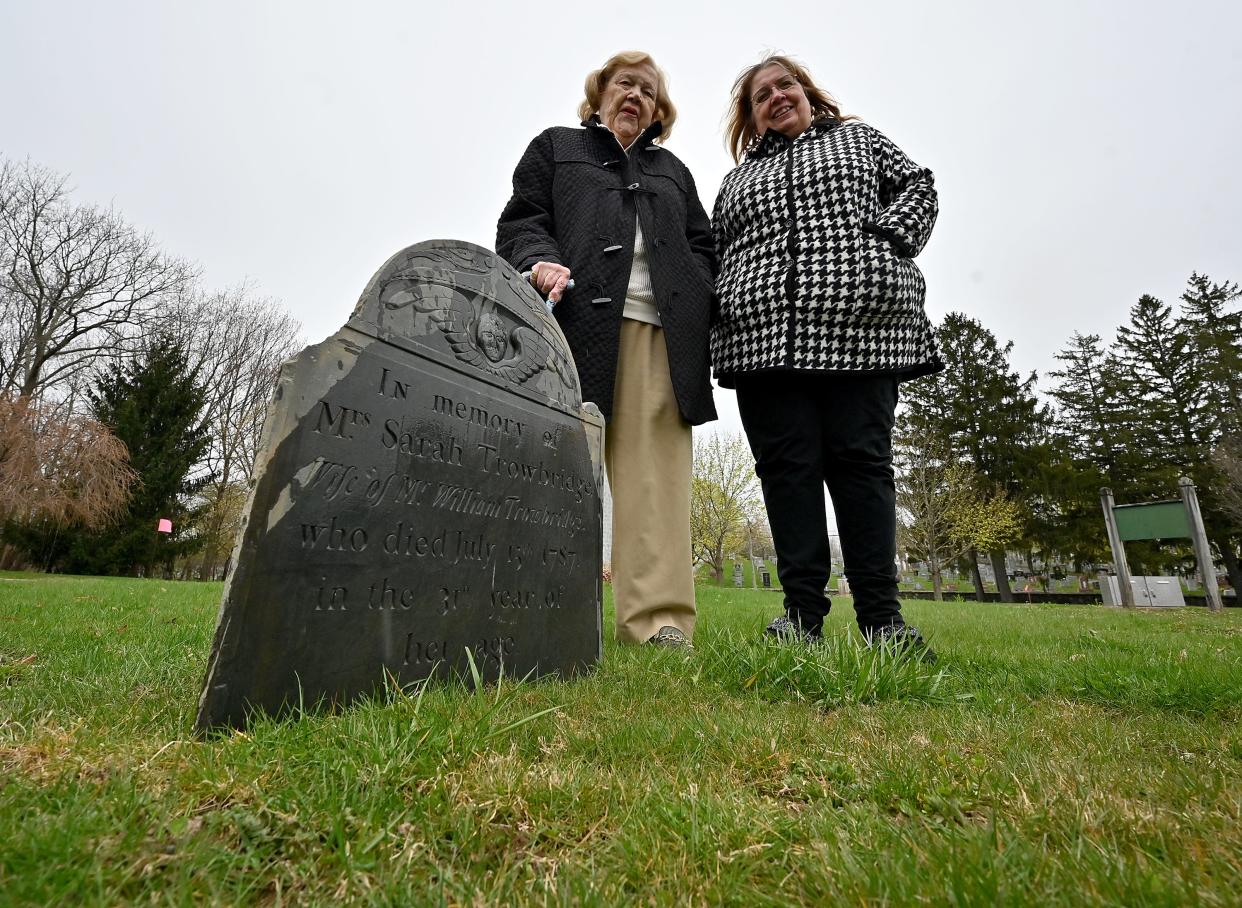
Farber and Bouley to the rescue
That’s when Daniel Farber, a local photographer and businessman, entered the picture. Farber joined Charles Bouley to establish the locations of the known burials on the Common. They did it using a map created 100 years earlier by Gill Valentine of the burial sites.
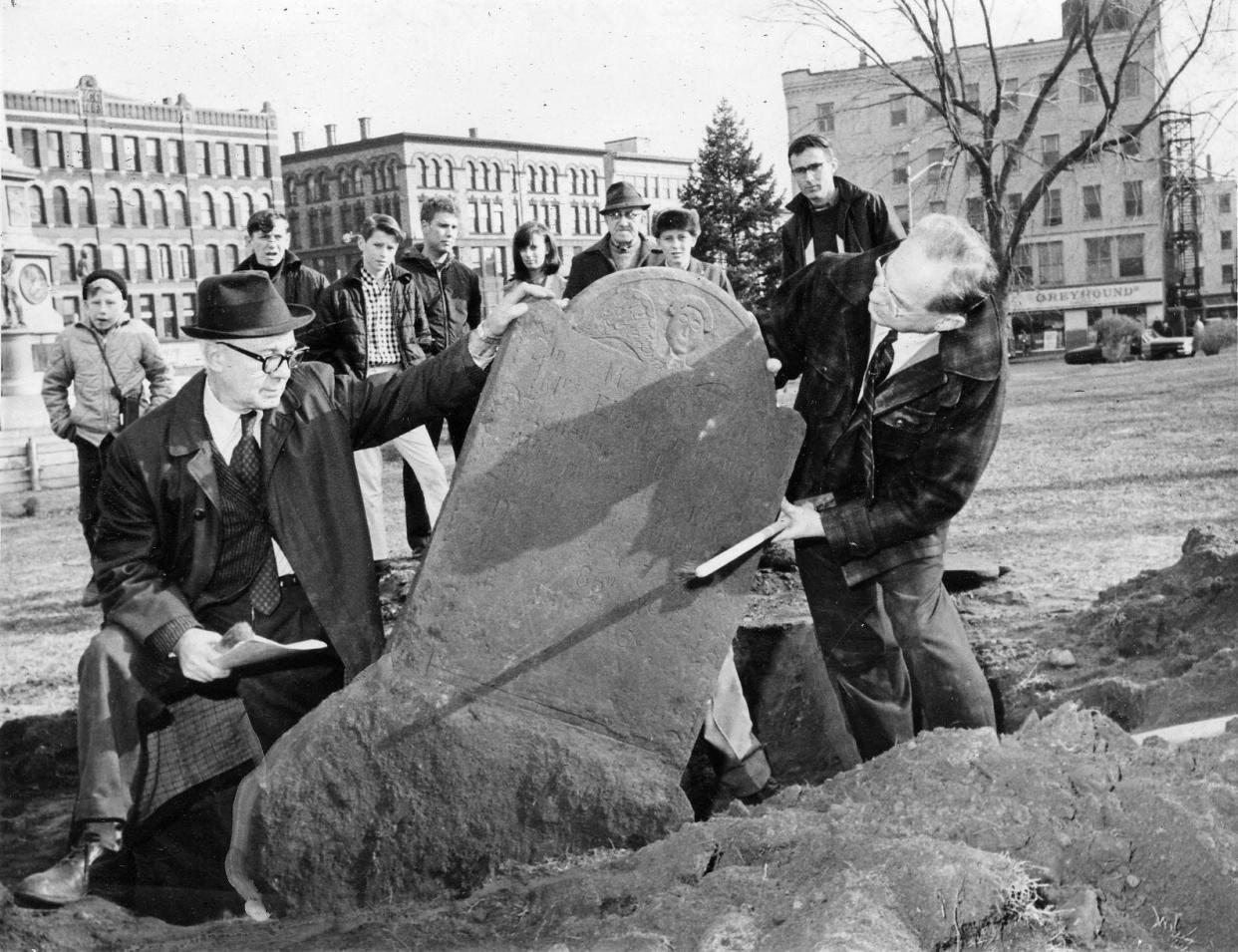
Using Farber and Bouley's updated map, city workers and local funeral directors disinterred the remains and gravestones in the 1960s. Seventeen of those remains are located in the Col. Timothy Bigelow Monument on the Common behind City Hall, but it’s unclear if the headstones in that space match the remains.
The rest of the exhumed remains were taken to Hope Cemetery and buried there in 1969.
Why were gravestones buried?
A granite marker at Hope Cemetery marks the spot where 111 people once laid to rest in Worcester Common are now in their final resting place in a small circular plot next to Hope Cemetery's administration building. Each of the remains buried in that plot is in its own wooden box. There are 47 names on the marker of those reinterred with their gravestones. Those without a gravestone are unidentified, according to the marker’s inscription.
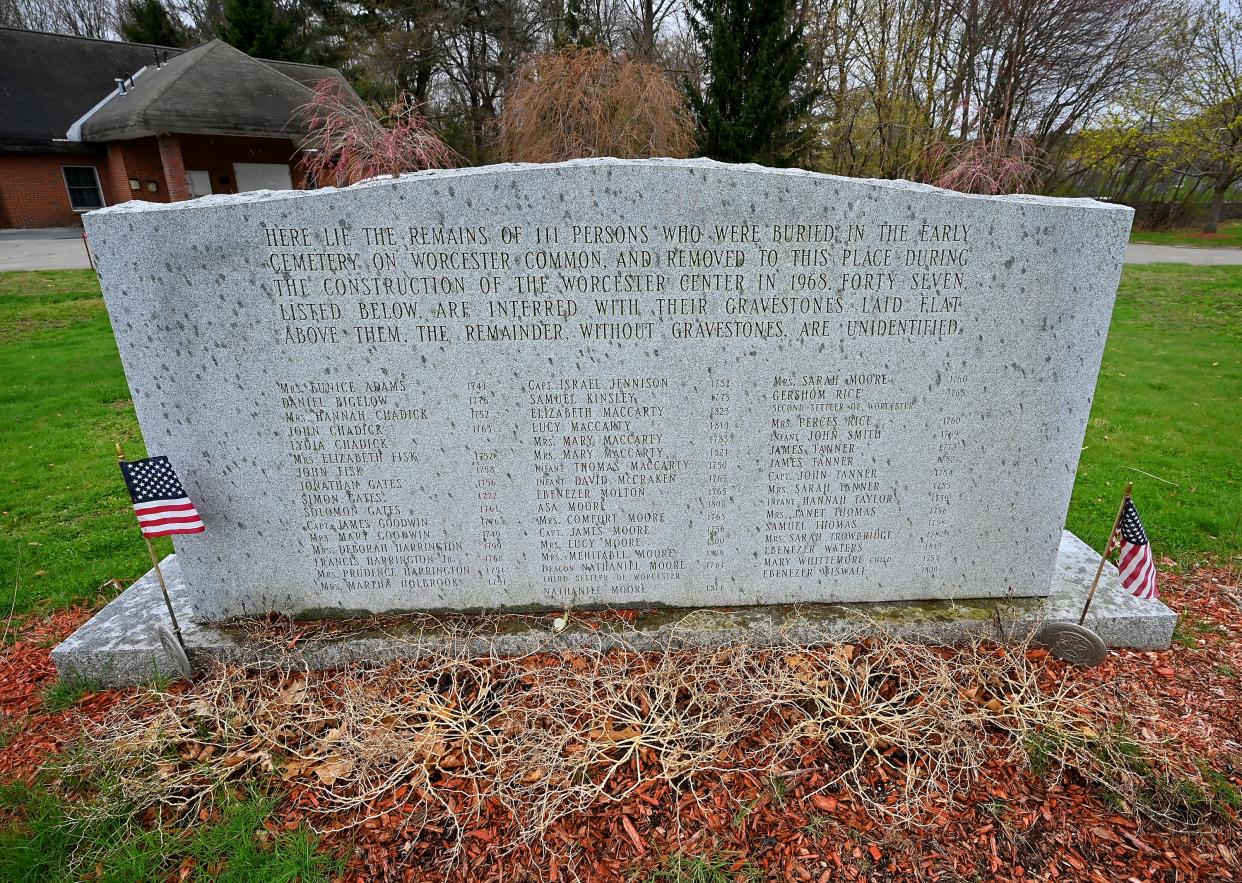
Why the gravestones were buried and not standing upright on that circular plot is a conundrum. Wallace explained that Farber wanted to supervise the work on the day of the reinturment at Hope Cemetery, but couldn't because his schedule was booked that day. As a result, the gravestones were mistakenly buried underground. Wallace said Farber, who died in 1998, told him that account.
The work continues
The goal is to unearth all 47 gravestones if they’re in a condition to be salvaged.
The Friends hired Commonwealth Heritage Group to conduct “ground truthing” to locate the stones and determine their likely condition. The work involved ground-penetrating radar that was done last fall at a cost to the Friends of $6,600.
Nelson thinks at least 30 gravestones could eventually be unearthed and placed above ground, since the work done by Commonwealth Heritage Group showed they’re buried in sandy material that could limit the risk of cracking.
Earlier this month, the Gates and Trowbridge gravestones were the first to be unearthed. That work, including stone restoration, was done by Ta Mara Conde, owner of Historic Gravestone Services. The Friends is paying Conde $64,000, and she plans to be back next week to continue the job. She’s not sure how many of the buried gravestones can be salvaged and expects to be on site through May to finish the assignment.
Trowbridge’s gravestone is standing, but only part of it is visible. Dirt covers the rest of it, and must temporarily stay that way because its broken at ground level and needs the dirt to prop it up. Conde revealed the hidden section has a four-line inscription: Passerby cast an eye/As you are now, so once was I/As I am now so you shall be/Prepare for death and follow me.
Conde plans to construct a base for the Trowbridge stone so it's entirety will be upright in public view. As for the Gates stone, it’s in “fine condition,” said Conde, and may not need any additional tinkering.
'I think that's very important'
It's a job that pays Conde, but the historic significance of the gravestones is equally important to her. “Being able to bring (the gravestones) up so a person can be recognized by someone, I think that’s very important.”
It’s also important to Nelson, who has lived in Worcester for more than 50 years. She's proud of the investments the Friends made over the years to improve Hope Cemetery, from restoring the entrance gates to replacing every street sign inside the cemetery — 151 of them at a cost of $75,000. The group also plans a rededication of the gravestones after Conde settles them above ground.
"(The gravestones) are an important part of Worcester's history," said Nelson.
Parent is another history lover, especially when it comes to Hope Cemetery. Her home is nearby, and she took her children sledding at the cemetery when they were youngsters. Parent rattled off facts about Gates, noting that he was the great-grandfather of Loring Coes, a Worcester native who invented the monkey wrench.
Her brief description of Trowbridge included the area around Hope Cemetery that was known as Trowbridgeville.
“I love keeping the history of these people,” she said.
Common still has buried remains
Wallace noted Worcester Common still has buried remains and headstones in the section across from the former Bancroft Hotel building on Franklin Street. The southern end of the Common along Church Street could also have remains. Archaeologists combed that area in the 1990s when the ground was dug up for a bus shelter and several gravestones were found.
"Rediscovering history" is how Wallace described the Gates and Trowbridge gravestones, and the work that continues at Home Cemetery to bring more above ground. "Gravestones are one of the earliest forms of American folk art. They tell the stories of the people who lived in Worcester.
"There are so few specifics beyond the names and inscriptions, and the gravestones allow us to revisit history and build more stories around them and share more of this legacy."
Contact Henry Schwan at henry.schwan@telegram.com. Follow him on X: @henrytelegram.
This article originally appeared on Telegram & Gazette: 18th-century gravestones unearthed at Hope Cemetery in Worcester
